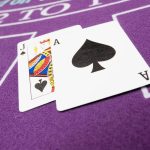Embracing Change, Not Denial
The reality of aging is undeniable. Physical changes, such as decreased muscle mass, reduced bone density, and longer recovery times, are natural. However, these changes don’t mean you must hang up your running shoes or say goodbye to your fitness goals. Instead, they signal a time to adapt and refocus. Facing the second half of your fitness life with acceptance allows you to adjust your routines and expectations to continue enjoying the benefits of physical activity, albeit in new ways.
Adaptation Is Key
Adaptation is at the heart of gracefully navigating the later stages of your fitness journey. It’s about listening to your body and understanding that what worked in your twenties or thirties might not be suitable now. This could mean shifting from high-impact activities like running to lower-impact exercises such as swimming or cycling, which are gentler on the joints. It might also involve more strength training to combat muscle loss and protect bone health. The goal is to find activities that you enjoy, that benefit your body, and that you can sustain in the long run.
The Importance of Recovery and Nutrition
In the second half of your fitness journey, recovery transforms from a supplementary aspect of your routine into a cornerstone of sustained activity. The body’s ability to bounce back after exertion diminishes with age, making it imperative to prioritize rest and recovery. Incorporating additional rest days and integrating recovery modalitiessuch as yoga, meditation, and even simple walkingbecomes essential.
These practices aid physical recovery and contribute to mental and emotional well-being, helping to alleviate stress and promote a balanced lifestyle.
- Rest Days: Increasing the frequency of rest days to allow for complete recovery.
- Active Recovery: Engaging in low-intensity activities that stimulate recovery without imposing undue stress on the body.
- Mindfulness Practices: Utilizing yoga and meditation enhances mental clarity and reduces stress, further supporting recovery.
Nutrition is pivotal in supporting the aging body, necessitating a focus on foods that promote recovery, reduce inflammation, and support overall health. A diet rich in omega-3 fatty acids, antioxidants, and essential nutrients can help mitigate the effects of aging, support muscle repair, and maintain energy levels.
Emphasizing whole foods, lean proteins, and a variety of fruits and vegetables ensures that your body receives the broad spectrum of nutrients it needs to function optimally.
- Anti-inflammatory Foods: Incorporating foods such as berries, nuts, and leafy greens to combat inflammation.
- Protein Intake: Ensuring adequate protein consumption to support muscle repair and maintenance.
- Hydration: Maintaining hydration to support metabolic processes and aid in recovery.
Seeking Guidance and Community
Seeking guidance from fitness professionals who specialize in working with older adults can provide insights into adapting your exercise routine to meet your changing needs. Additionally, finding a community of like-minded individuals facing similar transitions can offer support, motivation, and a sense of belonging. Whether it’s joining a walking group, signing up for a senior fitness class, or engaging in online forums, connecting with others can enrich your fitness journey.
Setting New Goals and Embracing Challenges
As priorities and capabilities evolve, so should the goals guiding your fitness journey. Setting achievable, meaningful objectives allows for continued motivation and satisfaction in your activities. It’s about shifting the focus from peak performance to holistic well-being, encompassing physical, mental, and emotional health.
Your gooals might include maintaining mobility, improving flexibility, or simply engaging in regular physical activity that brings joy and satisfaction.
- Realistic Objectives: Tailoring goals to match current physical capabilities and interests.
- Variety in Activities: Exploring new forms of exercise that cater to your changing body and preferences.
- Consistency Over Intensity: Prioritizing regular, moderate activity over sporadic, intense workouts.
Facing new challenges is essential for growth at any stage of life. In the context of fitness, it means embracing the limitations and changes that come with age as opportunities to explore new activities and forms of movement. Whether it’s mastering a new skill, participating in a group class tailored to seniors, or engaging in low-impact sports, each challenge presents a chance to enrich your fitness journey and discover new passions.
- Adaptive Sports: Trying sports adapted for older adults, such as golf, bowling, or swimming.
- Skill Development: Learning new skills or activities that challenge the mind and body, such as dance or martial arts.
The Mental and Emotional Benefits of Staying Active
The benefits of staying physically active extend far beyond the physical. Exercise is a powerful tool for mental health, offering a natural boost to mood, reducing anxiety and depression, and enhancing cognitive function.
As you get older and older, the mental and emotional benefits of exercise become even more valuable. Staying active can help maintain your independence, boost your self-esteem, and provide a sense of purpose.
Aging Gracefully, Not Foolishly
Choosing to age gracefully in your fitness life is a decision to respect your body’s changing needs while continuing to engage in activities that bring joy and vitality. It’s a commitment to holistic well-being, recognizing that physical health is intertwined with mental and emotional health.
By adapting your approach to fitness, focusing on recovery and nutrition, seeking guidance, and setting new goals, you can face the second half of your fitness life with optimism and grace.
The journey of aging is inevitable, but how we choose to navigate this path is up to us. Facing the second half of your fitness life with a mindset of grace and adaptability opens the door to a fulfilling, vibrant future. It’s an opportunity to redefine what fitness means to you, explore new activities, and embrace the profound benefits of staying active.
As you embark on this journey, remember that aging gracefully is not just about maintaining physical health but about nurturing a life of balance, happiness, and resilience.
Related posts:
 #881 Be Still and Be Loved: “It is Finished” (Mark 16:1-4) – Michele Tupen
#881 Be Still and Be Loved: “It is Finished” (Mark 16:1-4) – Michele Tupen
 Unveiling the Excitement: New Blackjack Games at Las Atlantis
Unveiling the Excitement: New Blackjack Games at Las Atlantis
 #880 REVING the Word “The Clean-Up Crew” Isaiah 6:1-7 – Alisa Keeton ENDURANCE
#880 REVING the Word “The Clean-Up Crew” Isaiah 6:1-7 – Alisa Keeton ENDURANCE
 #879 Walk and Talk with Alisa: Morning Routines, Not So Quiet Time, and Other Things That Bring Joy
#879 Walk and Talk with Alisa: Morning Routines, Not So Quiet Time, and Other Things That Bring Joy
